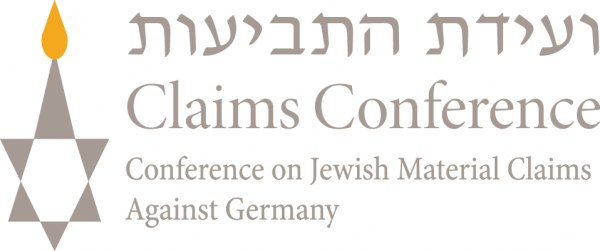Survivor Story: Anne Kelemen
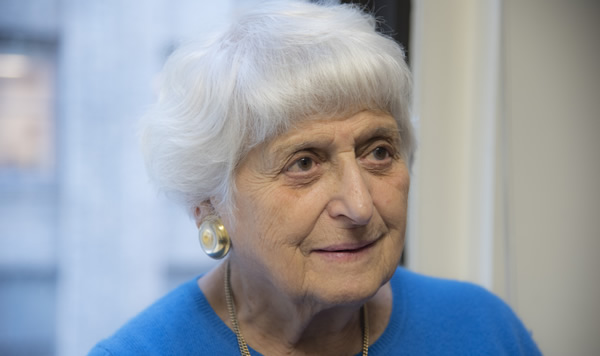
Enduring Kristallnacht
Anne Kelemen, now of New York City, was a girl of 13 on Nov. 9, 1938, when her father’s textiles shop in Vienna was ransacked and destroyed by brown-shirted youths. Culminating months of a deteriorating environment for Jewish residents of the Austrian capital, Kristallnacht – “the night of broken glass” – marked an ominous turning point in Nazi treatment of Jews.
“We heard a lot of shouting and screaming,” Anne recalls. “My mother said I am not to open the windows or leave the house or go to school. Something terrible is happening; there are fires everywhere.”
This year, as we mark the 77th anniversary of Kristallnacht, the Claims Conference remembers its victims and continues working towards helping all Jewish victims of Nazi persecution. Anne Kelemen fled Austria on the Kindertransport in May 1939 and has borne a lifetime of grief from being torn from her family.
Watch a video interview with Anne Kelemen done in conjunction with Lawrence University’s 2013 symposium, “Surviving the Anschluss.”
In 1938, Austria’s Jewish population was 182,000 and there were about 70,000 more citizens who were of mixed Jewish-Christian heritage. After the Anschluss – the annexation of Austria by Germany in March 1938 — the situation grew dire for Jewish residents. Anne remembered watching from her apartment window a group of elderly Jewish men forced to write “saujud” – swine Jew – on the pavement and then scrub it off. When school started that September, young Anne was told by her teacher to sit in the back with the other Jewish students, and that the Austrian students must ignore them.
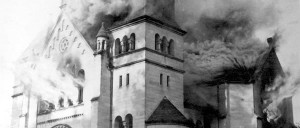
“There were five Jewish girls in a class of 22, and all the non-Jews turned the other way,” Anne recalled. “And we had known each other for years. We were not called on by the teacher. We became non-people in 24 hours. It was heartbreaking.” Anne and the other Jewish students were soon thrown out of school and sent to an all-Jewish school, which happened to be in the back of the building that housed the local SS office.
But that early November night brought the horrors right into their own family. Hundreds of Jewish-owned businesses, and synagogues and Jewish cemeteries were ruined during Kristallnacht. Approximately 7,500 Jewish-owned businesses and 267 synagogues were destroyed in Germany, Austria and the Sudetenland, according to SS leader Reinhard Heydrich at a meeting with top Nazi leaders, including Hermann Göring and Joseph Goebbels, held on November 12. Mobs of people, both Nazis and ordinary citizens, rioted throughout the night. Ninety-one Jews were killed and an estimated 30,000 arrested and sent to concentration camps.
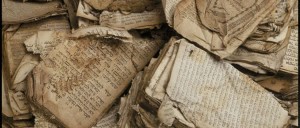
One of those destroyed shops was owned by Anne’s father. “My father, Sandor Kelemen, went to work at the little shop. He was so trusting and so honest,” Anne recalled, saying that he had a very good relationship with the local policemen. “A group of brown-shirted boys came in from the street. They asked if he owned the shop. They had sticks and iron bars and they smashed everything that could be smashed. My father said, ‘What are you doing?’ He thought they were hoodlums. He went to a policeman at the corner, and said, ‘Herr Policeman, please help me.’ And the policeman said, ‘I can’t help you, you have to go to the police station.’ And so he went and there he made a report,” Anne said.
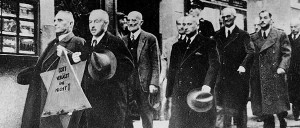
After the war, Anne was able to get a copy of that report her father made at the police station on Kristallnacht. In it, her father pleaded for help. “This merchandise represents all the merchandise I own,” her father told the police. “Until today I have never been politically active. I’ve never owed any taxes and I’m in my 62nd year. I beg the high authority to help me to get my merchandise back and to enable me to continue my usual work. I am begging you to attend to my appeal as soon as possible.”
Anne recalled a sense of despair in their home when her father returned. “There was a terrible fear of what would happen. All the doors are closed. Where will we go?” she said. “Only because my father told the police his age was he not arrested and deported to a concentration camp.”
Anne was one of the lucky ones. She got a place on a Kindertransport and in May 1939 went to England, where she joined her older sister who had left Vienna several years earlier and who was working as a maid in a large country-house. Anne spent the war years at boarding school in Dorset, England. She never saw her parents again. Anne received letters from them through the Red Cross, including from the ghetto in Izbica, Poland, but these soon stopped. She believes they were killed at a death camp in Poland. Even to this day, Anne remembers her agony at being separated from her beloved parents. “I did not want to leave,” she recalled. “I wanted to stay and be safe with them.”
Anne immigrated to the United States in 1950, and had a successful career working with the elderly at a Jewish social welfare agency in Manhattan. But, Anne says, she spent years searching for her parents, and suffered from depression. A friend directed her to Selfhelp Community Services, one of the many New York organizations that receive funding from the Claims Conference to aid Holocaust survivors.
Anne, now age 90, lights up when she talks about Michele, her social worker at Selfhelp. For about seven years, Michele has been checking in on Anne, making sure she does not sink into the depression that gripped her for so many years. “We have a first-rate relationship,” Anne says. She is grateful to the Claims Conference for enabling her to receive services from Selfhelp. “Michele is the living example of the help I receive from the Claims Conference,” Anne says firmly.
Anne also received a payment from the Hardship Fund and receives an Austrian government pension. Ultimately, we all know that these funds help her live her life with more dignity but nothing can bring back what was so cruelly taken from her.
In 2013, Anne participated in a Holocaust symposium at Lawrence University in Appleton, Wisconsin, which had produced a film called “Surviving the Anschluss: Austrian Jews in the Holocaust.”
The horrors Anne remembers from her youth, more than three-quarters of a century ago, have not been blunted by time. Her grief at being separated from her parents in 1939 still plagues her. Anne’s neighbors and fellow Austrians stood by as her family was attacked. Today 77 years later, we are not “standing by.” We are there for Anne, and the tens of thousands like her, who need us.

